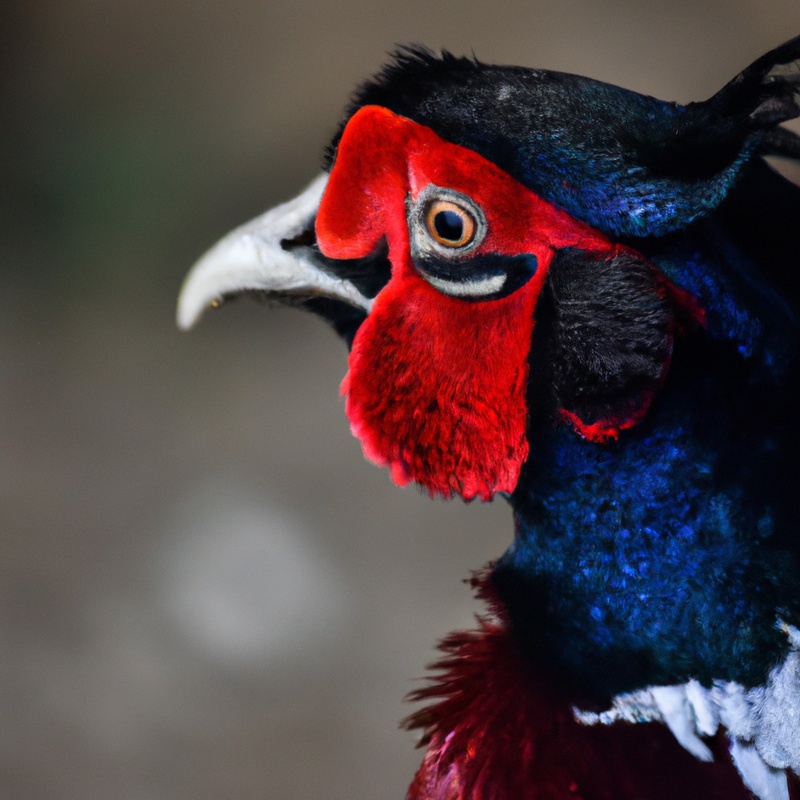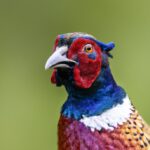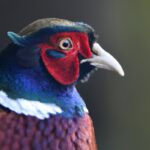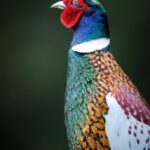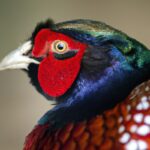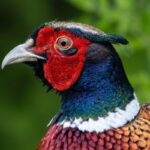Key Takeaways:
- Hunting pheasant in Colorado offers a unique and exciting experience for outdoor enthusiasts.
- Colorado’s diverse landscapes and habitats provide excellent opportunities for pheasant hunting.
- Proper planning, licensing, and adherence to hunting regulations are essential for a successful and legal pheasant hunt in Colorado.
- Engaging in responsible hunting practices ensures the sustainability of pheasant populations in Colorado.
Are you ready to embark on an adventure through the breathtaking landscapes of Colorado in pursuit of pheasants?
As an avid hunter and Colorado native, I can assure you that the Centennial State offers some of the best opportunities for pheasant hunting in the country.
In this guide, we’ll dive into everything you need to know to plan a successful and thrilling hunt in Colorado.
From obtaining the necessary licenses to selecting the perfect gear, we’ll cover it all.
So, grab your shotgun, join me as we explore the diverse hunting spots, learn effective techniques, and ensure safety in the field.
Let’s dive into the world of pheasant hunting in Colorado!
Aspect | Details |
Season | October to January |
Permits | Valid small game license and habitat stamp |
Bag Limit | 3 per day, up to 9 in possession |
Firearms | Shotguns with 10 or smaller gauge |
Time | ½ hour before sunrise till sunset |
Dogs | Allowed, must have suitable hunting gear and training |
Public Lands | Available for hunting, check restrictions and closures |
Private Lands | Obtain permission from landowners |
Preparing for the Hunt
Getting the required licenses and permits
To go hunting pheasant in Colorado, you will need to obtain the necessary licenses and permits. The first thing you need is a small game hunting license, which can be purchased online or at a local authorized vendor.
Additionally, you may need a state habitat stamp, so check the requirements beforehand.
It’s important to check the specific regulations for the area you plan to hunt in, as there may be additional permits or restrictions. Remember to carry your licenses and permits with you while hunting to avoid any complications.

Choosing the right hunting gear
Choosing the right hunting gear is essential for a successful pheasant hunt. Here are some key items you’ll need:
- Shotguns: Opt for a 12 or 20-gauge shotgun with a modified choke for versatility.
- Ammunition: Use No. 6 or No. 4 shot for efficient pheasant hunting.
- Blaze Orange: Wearing a blaze orange hat or vest is crucial for safety and visibility.
- Hunting Boots: Invest in waterproof and insulated boots for comfort and protection in various terrains.
- Clothing: Dress in layers to adapt to changing weather conditions.
- Game Bag: A sturdy game bag will hold your harvested pheasants and other gear.
- Calls: Consider using a pheasant call to attract birds to your location.
Remember to check local regulations and recommendations for additional gear or restrictions. Happy hunting!
Understanding the hunting regulations in Colorado
Understanding the hunting regulations in Colorado is essential before heading out on your hunting trip.
Here are a few key points to keep in mind:
- Licensing: Make sure you have the appropriate hunting license for the type of game you intend to hunt. This includes obtaining any necessary tags or permits.
- Seasons and Bag Limits: Familiarize yourself with the hunting seasons and bag limits for different species. These regulations ensure sustainable hunting practices and help maintain healthy populations.
- Hunting Zones: Colorado has specific areas designated for hunting. Be aware of any restrictions or specific rules that apply to the zone you plan to hunt in.
- Firearms and Equipment: Follow the rules and regulations regarding firearms, ammunition, and hunting equipment. It’s important to stay compliant and prioritize safety at all times.
- Reporting Requirements: Some hunting activities require mandatory reporting. This may include reporting harvest, submitting samples for disease testing, or participating in surveys. Stay informed and fulfil these requirements if applicable.
By understanding and adhering to Colorado’s hunting regulations, you can have a safe and enjoyable hunting experience while protecting the state’s wildlife and ecosystems.
Where to Hunt Pheasants in Colorado
Colorado’s public hunting areas
Colorado offers a variety of public hunting areas for pheasant enthusiasts. These areas are managed by the state and provide opportunities for both resident and non-resident hunters.
Some popular public hunting areas in Colorado include Brush Prairie State Wildlife Area, Flanagan Reservoir State Wildlife Area, and Kiowa Creek State Wildlife Area.
These areas offer a range of habitats and landscapes, making them prime locations for pheasant hunting. Remember to check the specific regulations and seasons for each area, and always practice ethical hunting practices.

Private hunting preserves in Colorado
Colorado offers a variety of private hunting preserves where you can enjoy pheasant hunting.
These preserves provide exclusive access to prime hunting grounds and may offer services such as guided hunts, dog rentals, and comfortable accommodations.
Some popular private hunting preserves in Colorado include Kiowa Creek Sporting Club, Bluffs Lodge & Ranch, and Rocky Mountain Roosters.
These preserves often require advance reservation and may have specific hunting seasons and bag limits.
Make sure to check their regulations and book your hunt in advance for a memorable pheasant hunting experience in Colorado.

Tips for scouting potential hunting spots
When scouting potential hunting spots, there are a few key tips to keep in mind:
- Research: Start by researching the area you plan to hunt in. Look for information on bird populations, habitat types, and any hunting regulations that may apply.
- Maps and Apps: Utilize maps and hunting apps to identify potential hotspots. Look for areas with suitable habitat, such as fields, grasslands, or wetlands, where pheasants are likely to be found.
- Seek Local Knowledge: Talk to local hunters, landowners, or even wildlife biologists for insights into where pheasants are typically found. Their experience and knowledge can be invaluable in determining the best spots to scout.
- Boots on the Ground: Once you have identified potential areas, it’s time to get out in the field. Walk through the habitat, paying attention to signs such as tracks, droppings, and flushes to gauge bird activity.
- Look for Diversity: Pheasants are often found in areas with a mix of cover and food sources. Look for habitats that offer a variety of vegetation, such as shrubs, tall grasses, and crop fields.
- Timing Matters: Scouting in the days leading up to the hunting season can give you a good idea of where pheasants are concentrated. Pay attention to their feeding and roosting patterns, as these can change throughout the season.
Hunting Techniques
Using dogs for pheasant hunting
Using dogs for pheasant hunting is a common and effective practice.
Dogs, particularly breeds like Labrador Retrievers or German Shorthaired Pointers, have a keen sense of smell and excellent tracking abilities.
They can help locate and flush out pheasants from their hiding spots.
Well-trained dogs can retrieve downed birds, making the hunting process more efficient and enjoyable.
Additionally, hunting with a dog can create a strong bond between the hunter and their canine companion, enhancing the overall hunting experience.
Using dogs for pheasant hunting can significantly increase your chances of success and make the hunt more enjoyable.
Walking up and flushing techniques
Walking up and flushing techniques are commonly used in pheasant hunting. When walking up, you quietly approach a potential hunting area, carefully scanning for any signs of game.
Move slowly and quietly to avoid alarming the birds.
When using the flushing technique, you can either work as a team, with one person flushing the birds towards others, or work alone, gently pushing the pheasants towards an open area. Remember to be patient and observant, as pheasants can be skittish and may run or fly away at the slightest noise or disturbance.
Decoying and calling strategies
Decoying and calling strategies are key components of successful pheasant hunting.
When it comes to decoys, placing them strategically in visible areas can attract passing birds.
Focus on using realistic-looking decoys to increase their effectiveness.
As for calling, mimicking the sounds of pheasants can lure them closer.
Start with simple calls like clucks and purrs, and gradually build up to more complex calls.
Remember to practice your calling techniques beforehand to ensure accuracy.
By incorporating these decoying and calling strategies into your hunting approach, you can increase your chances of a successful hunt.
Safety Tips
Proper firearm handling and safety practices
Proper firearm handling and safety practices are essential when hunting pheasant in Colorado.
Here are a few key tips to ensure your safety and the safety of others.
- Always treat every firearm as if it is loaded, even if you believe it is not.
- Keep your finger off the trigger until you are ready to shoot.
- Be aware of your target and what is beyond it to avoid any accidents.
- Never point your firearm at anything you do not intend to shoot.
- Use the appropriate ammunition for your firearm and follow the manufacturer’s instructions.
- Prioritize wearing proper protection, including eye and ear protection. These practices will help ensure a safe and enjoyable hunting experience.
The importance of wearing hunter orange
Wearing hunter orange is extremely important while hunting. It increases your visibility to others, especially in dense vegetation or low-light conditions.
This bright color helps prevent accidents by allowing other hunters to easily identify your presence in the field.
Without wearing hunter orange, it can be difficult for other hunters to see you, increasing the risk of misunderstanding and potentially dangerous situations. By wearing hunter orange, you enhance your safety and the safety of everyone around you.
So, make sure to always wear hunter orange when you’re out hunting.
Stay safe!
Weather conditions and staying safe in the field
When heading out for a hunting trip, it’s important to consider the weather conditions and take appropriate safety precautions.
Here are some tips to help you stay safe in the field:
- Check the weather forecast before you go: Knowing what to expect can help you dress appropriately and be prepared for any potential challenges.
- Dress in layers: Colorado weather can change quickly. Layering your clothing allows you to adjust your outfit based on the temperature and stay comfortable throughout the day.
- Stay hydrated: Hunting can be physically demanding, especially if you’re covering long distances. Bring enough water to stay hydrated and avoid exhaustion.
- Be aware of your surroundings: Familiarize yourself with the area, paying attention to hazards like steep terrain, slippery slopes, or deep water. Stay alert and watch out for other hunters in the vicinity.
- Communicate with others: Let someone know where you’ll be hunting and when you expect to return. Carry a cell phone or two-way radio for emergencies or to stay in touch with your hunting party.
By staying informed about the weather, dressing appropriately, and being mindful of your surroundings, you can maximize your safety while hunting pheasants in Colorado.
Stay safe and enjoy your hunting experience!
Dressing and Cleaning Pheasants
Quick and efficient field dressing techniques
When it comes to dressing a pheasant in the field, there are a few quick and efficient techniques to keep in mind.
- Start by plucking the feathers from the breast, legs, and wings. This can be done easily by grabbing a handful of feathers and pulling them against the direction they lie.
- Use a sharp knife to make an incision along the breastbone, from the base of the neck to the vent. Be careful not to puncture any organs.
- Carefully remove the organs, being mindful of the gall bladder. Cut around it to avoid any leakage into the meat.
- Rinse the cavity with cold water to clean out any remaining debris.
- Once dressed, place the pheasant in a plastic bag and store it in a cooler or cold environment until you’re ready to cook it.
Methods for plucking or skinning pheasants
To pluck a pheasant, you can start by dipping it in boiling water for a few minutes. This will help loosen the feathers.
Then, use a sharp knife to carefully remove the feathers, making sure not to tear the skin.
Alternatively, you can skin the pheasant by making a small incision near the anus and carefully peeling the skin away from the body. This method is quicker but results in a skinless bird.
Whichever method you choose, be sure to handle the pheasant with care to avoid any damage to the meat.
Tips for cooking and preserving pheasant meat
When it comes to cooking and preserving pheasant meat, here are some tips you can follow:
- Marinate the meat – Pheasant can be a bit lean, so marinating it in your favorite flavors can help tenderize and add moisture before cooking.
- Cook low and slow – Pheasant meat can dry out quickly, so cooking it at a lower temperature for a longer time can help retain its juiciness.
- Try different cooking methods – Whether you roast, braise, or grill pheasant, experimenting with different cooking methods can bring out different flavors and textures.
- Freeze the excess – If you have leftover cooked pheasant, freezing it can be a great way to preserve its freshness. Just make sure to store it properly in airtight containers or freezer bags.
- Use vacuum sealing – Vacuum sealing raw pheasant meat before freezing can help maintain its quality and prevent freezer burn.
Frequently Asked Questions
What are the hunting seasons and bag limits in Colorado?
In Colorado, the hunting seasons and bag limits vary depending on the type of game you are hunting.
For pheasant specifically, the season typically begins in November and runs through January.
The bag limit for pheasant in Colorado is three birds per day.
It’s important to note that hunting seasons and bag limits can change, so always check the current regulations before heading out.
Additionally, make sure you have the appropriate licenses and permits required for hunting in Colorado.
Can non-residents hunt pheasants in Colorado?
Sure, here’s a concise answer to your question: Non-residents can hunt pheasants in Colorado. The Colorado Parks and Wildlife (CPW) allows non-residents to purchase hunting licenses for pheasant hunting.
However, it’s important to note that non-residents may need to apply for special permits or participate in a lottery system for certain hunting seasons or areas.
Additionally, non-residents should familiarize themselves with the specific rules and regulations set by the CPW regarding bag limits, hunting methods, and hunting seasons. Happy hunting!
What are the recommended shotgun loads for pheasant hunting?
When it comes to pheasant hunting, the recommended shotgun loads are usually 12-gauge or 20-gauge with shot sizes ranging from #4 to #6. These loads offer a good balance of power and shot density for hitting pheasants at typical hunting distances.
Additionally, using non-toxic shot is required in many areas to protect the environment.
Remember to check the specific regulations in your hunting location to ensure compliance. Happy hunting!
Final Verdict
Hunting pheasants in Colorado offers a thrilling and rewarding experience for both residents and non-residents alike.
By properly preparing for the hunt, understanding the regulations, and choosing the right gear, hunters can increase their chances of success.
Colorado provides a variety of public hunting areas and private preserves for hunters to explore.
With techniques like using dogs, walking up and flushing, and decoying strategies, hunters can employ various tactics to pursue pheasants.
Safety should always be a top priority, and proper firearm handling, wearing hunter orange, and being aware of weather conditions are crucial.
Lastly, knowing how to dress and clean pheasants is essential for preserving meat and enjoying delicious meals.
With these tips and guidelines, hunters can truly make the most of their pheasant hunting adventures in Colorado.
